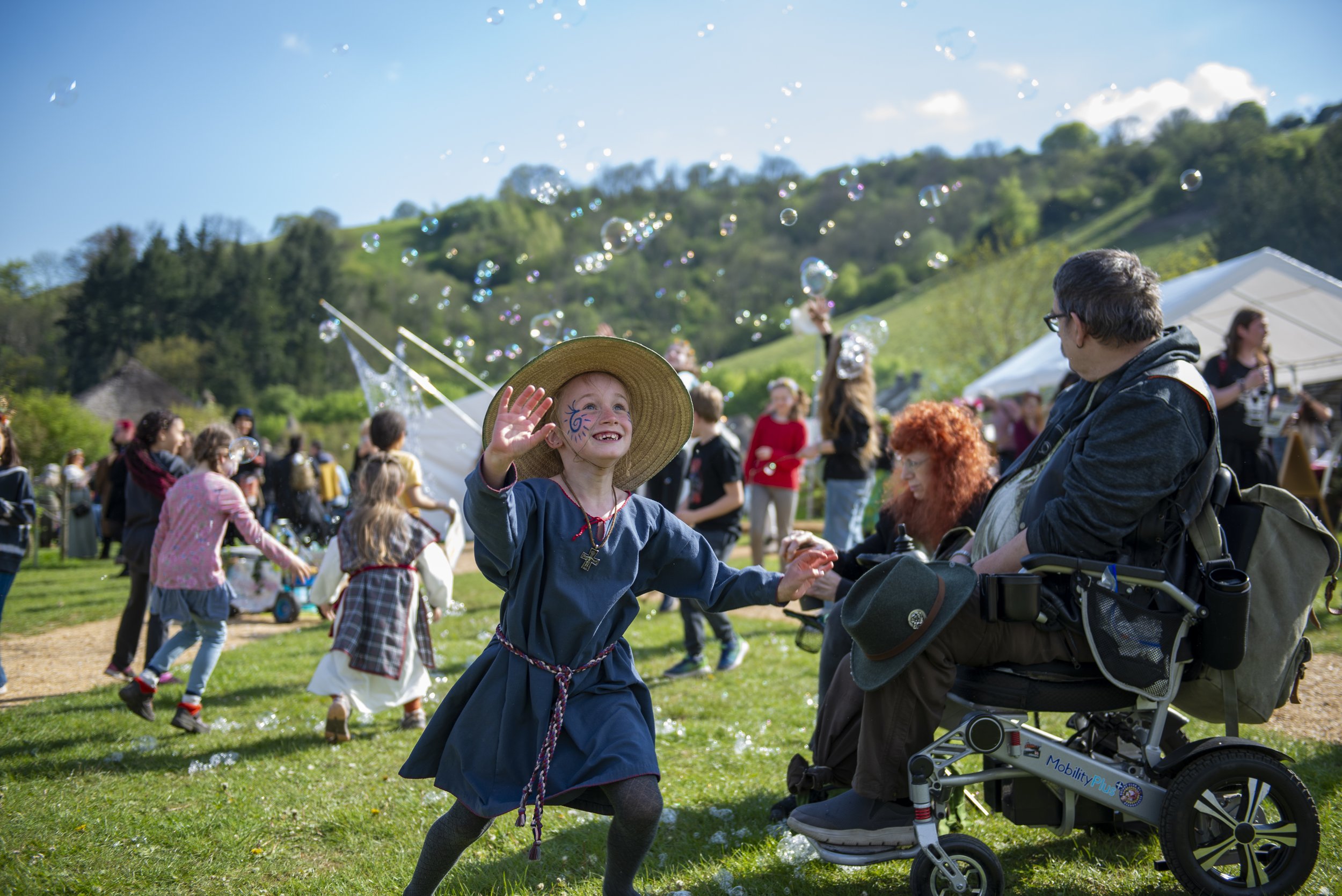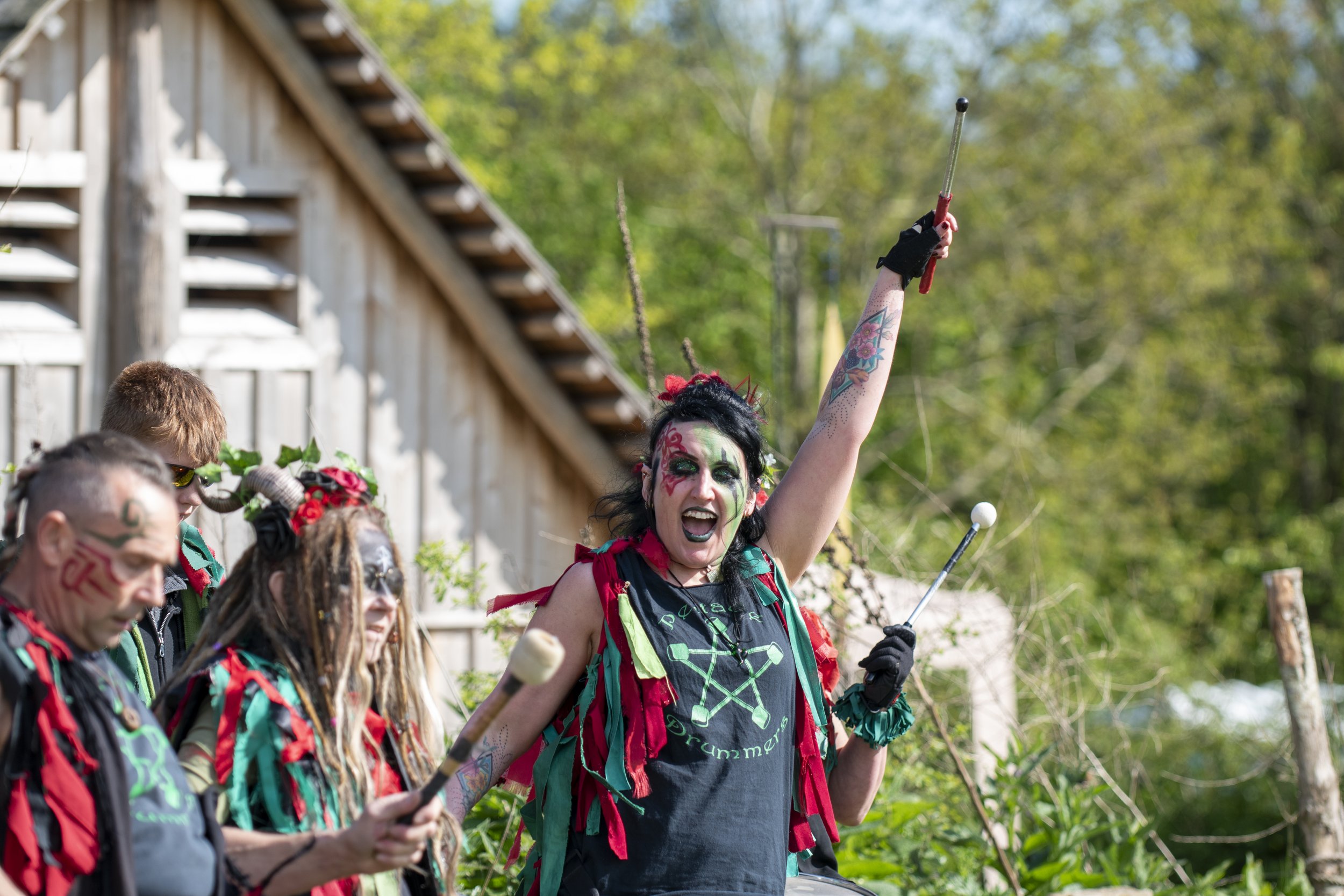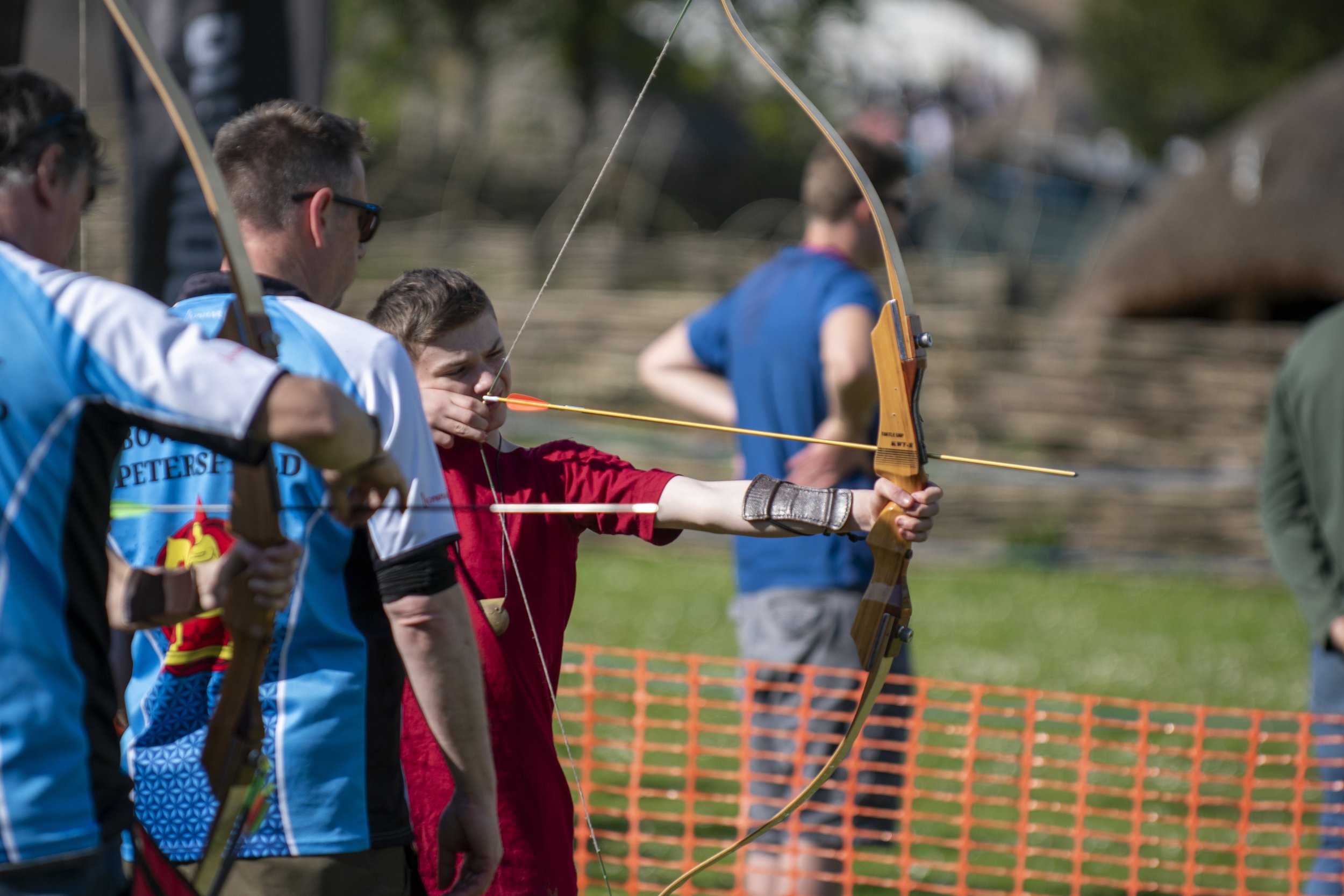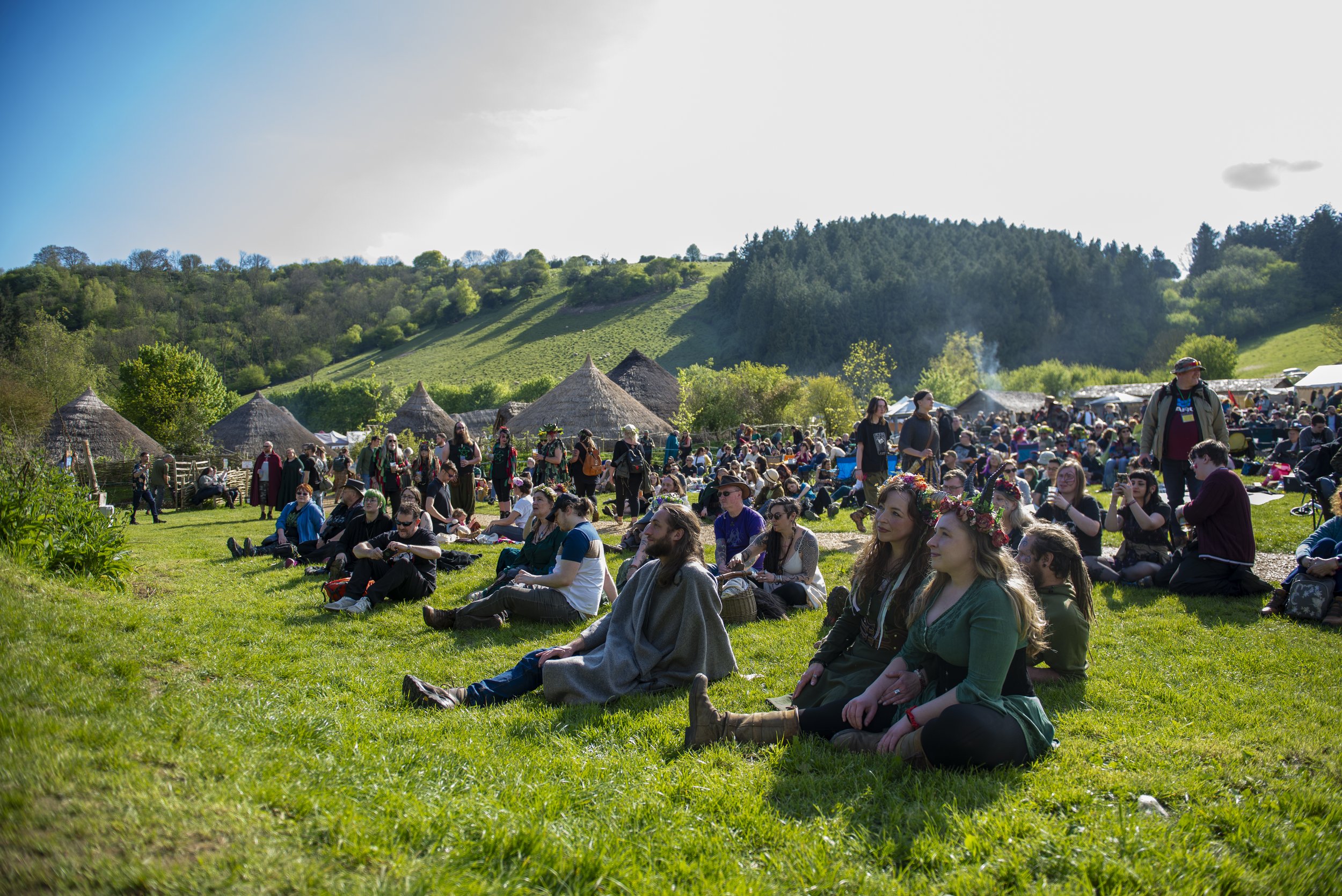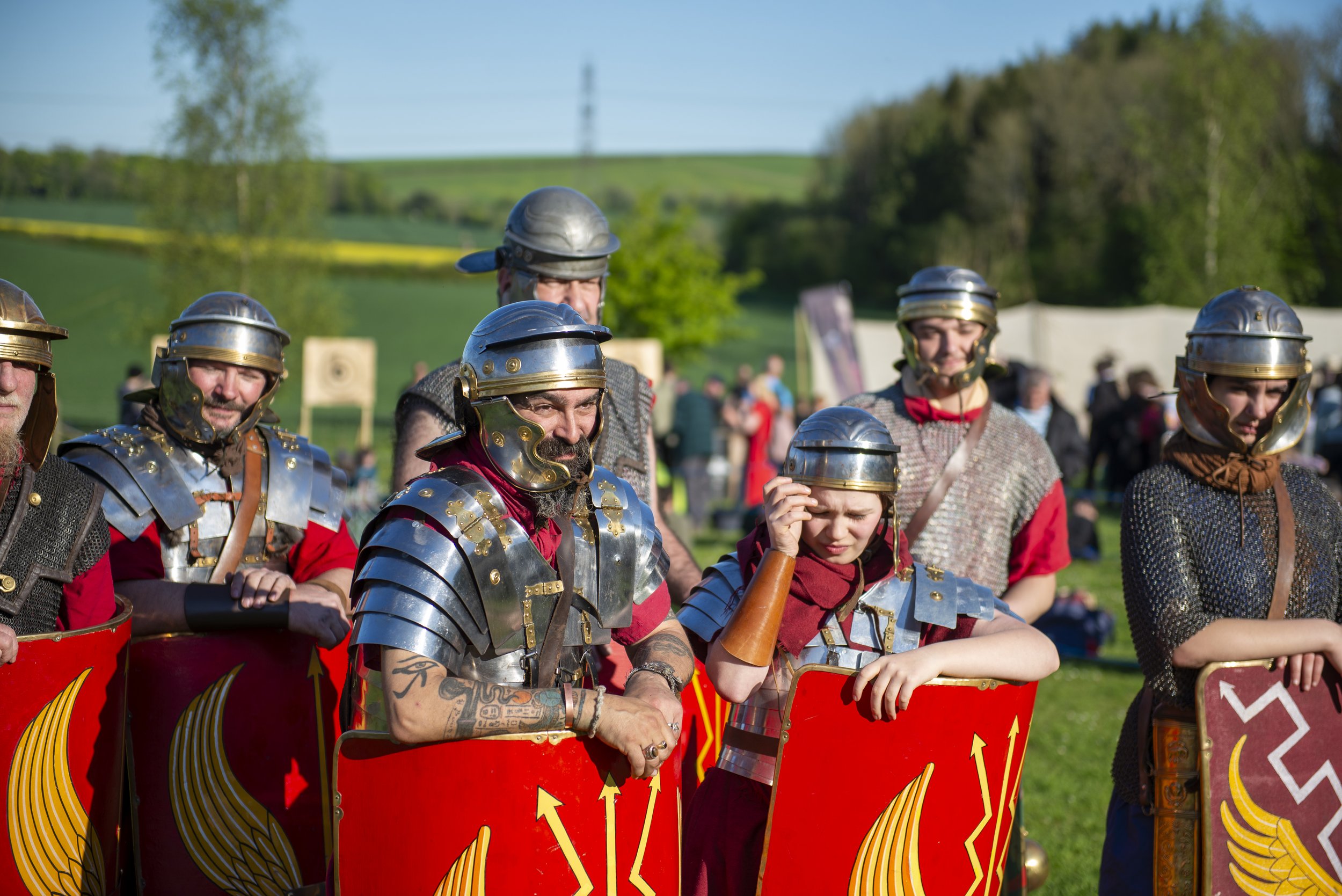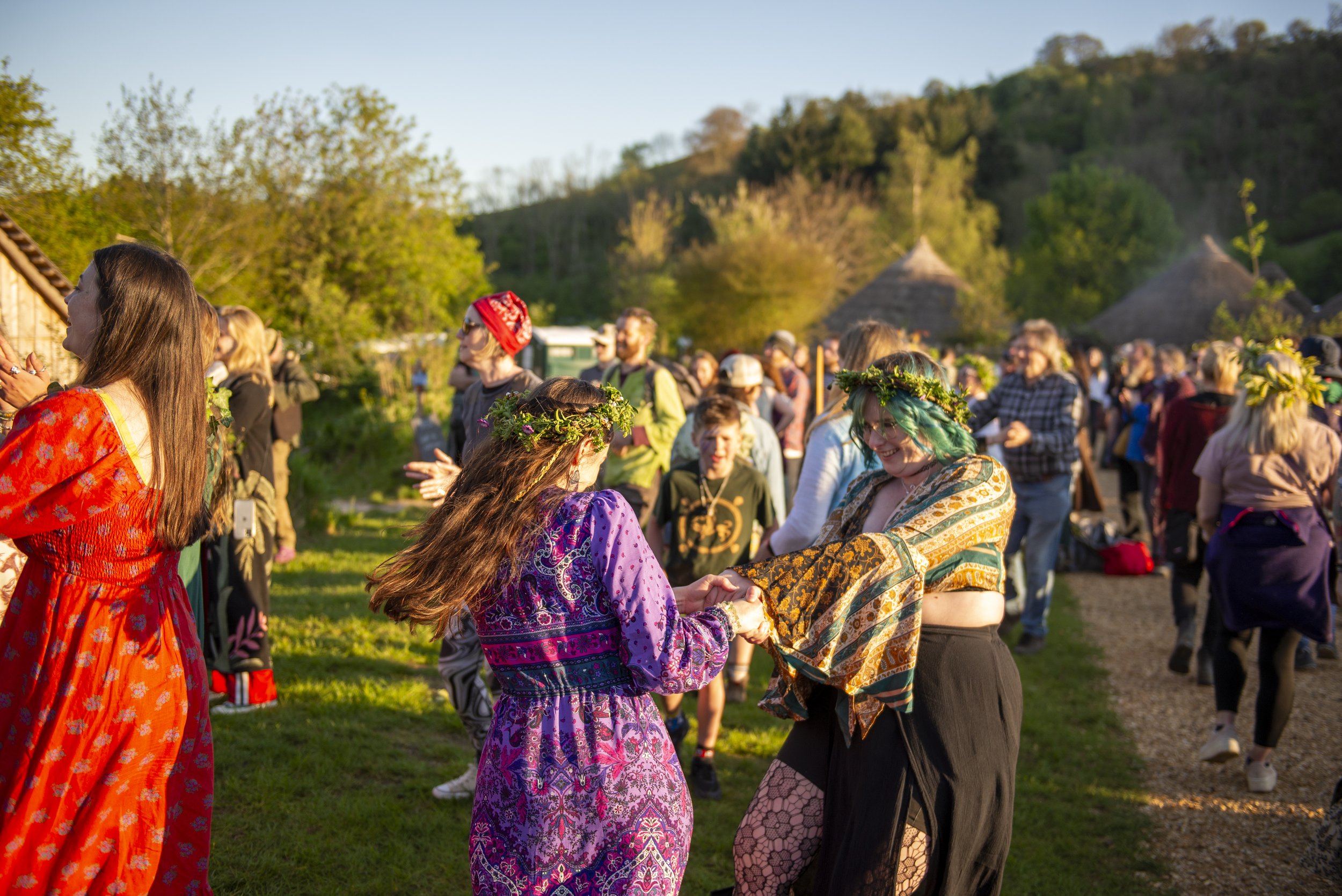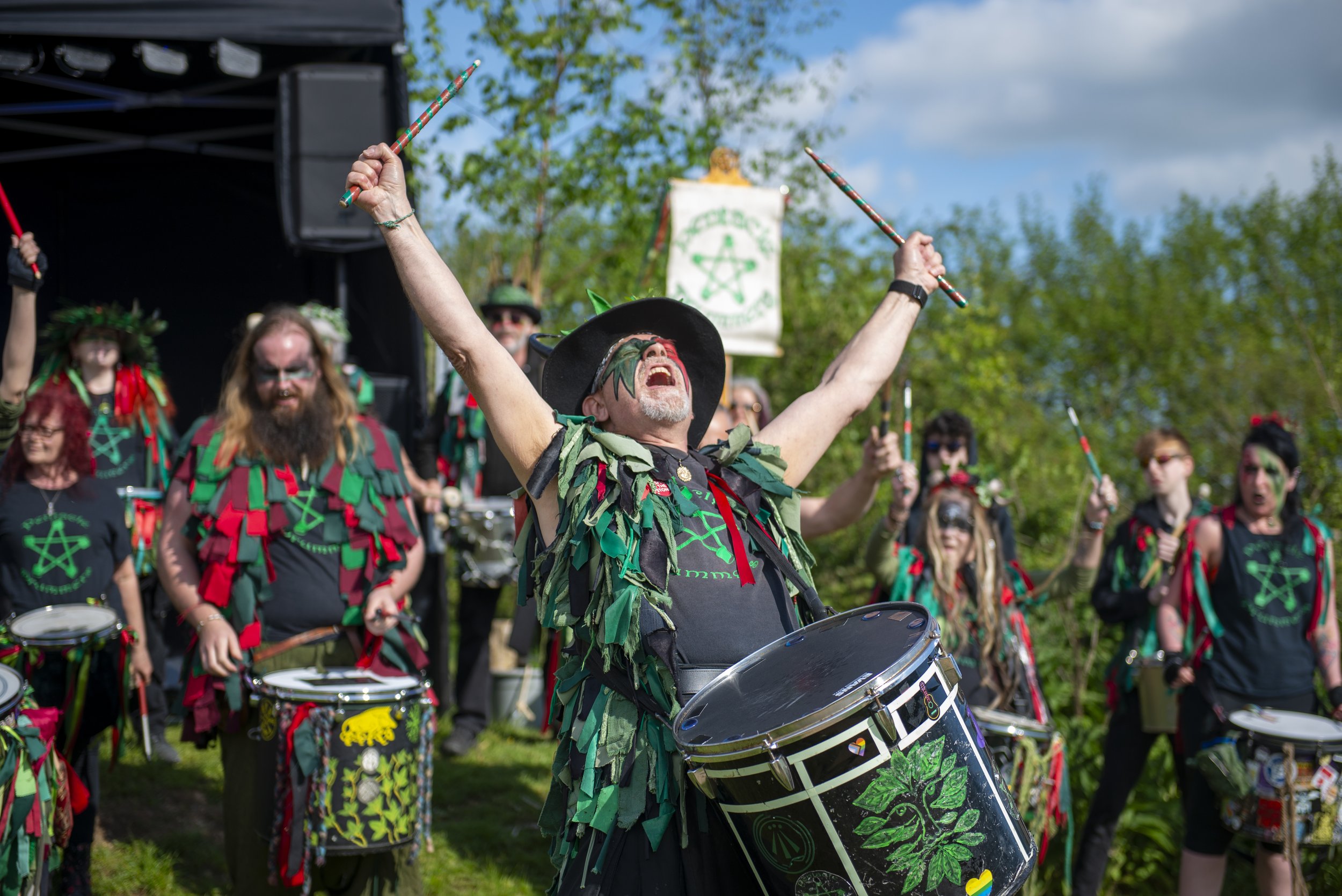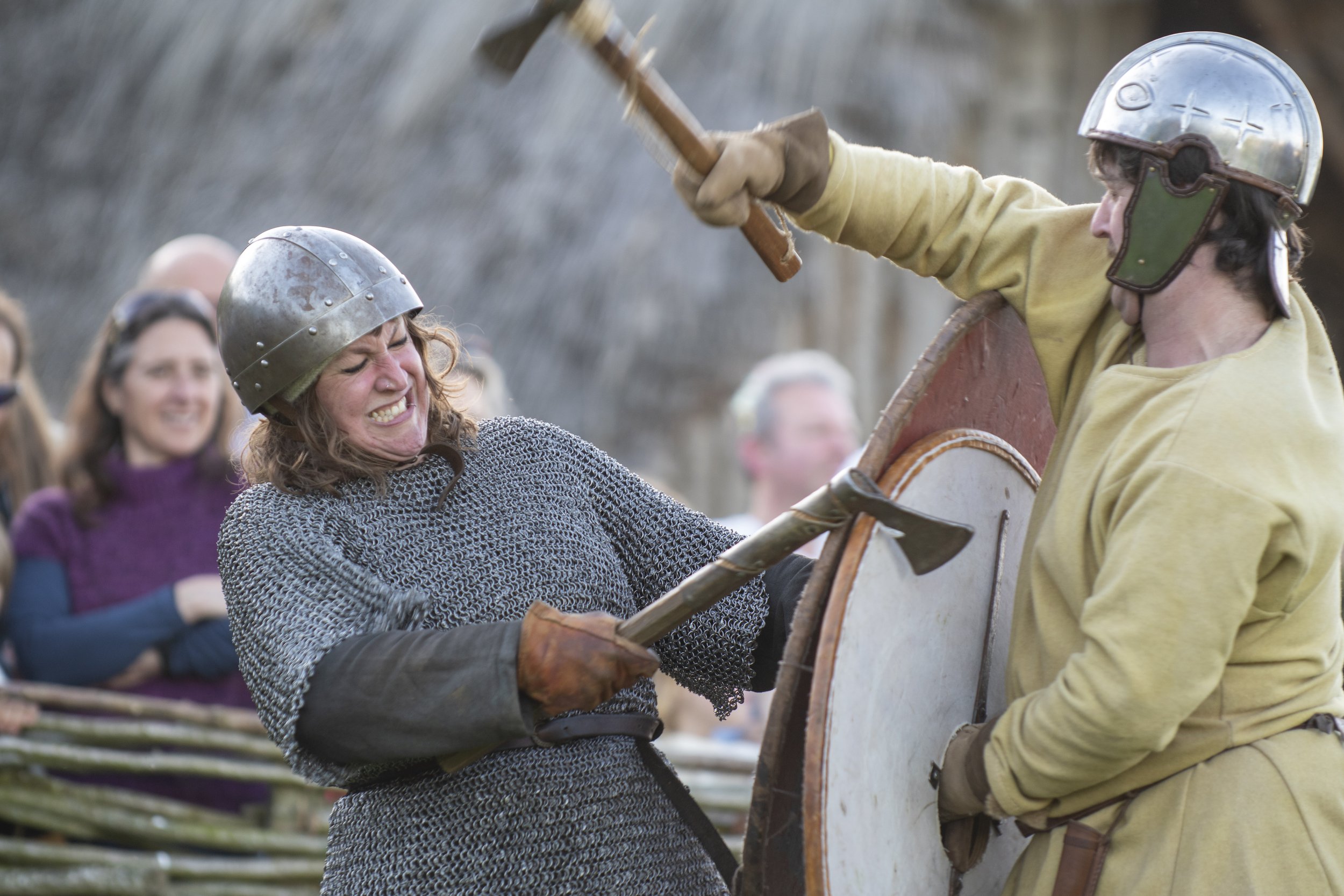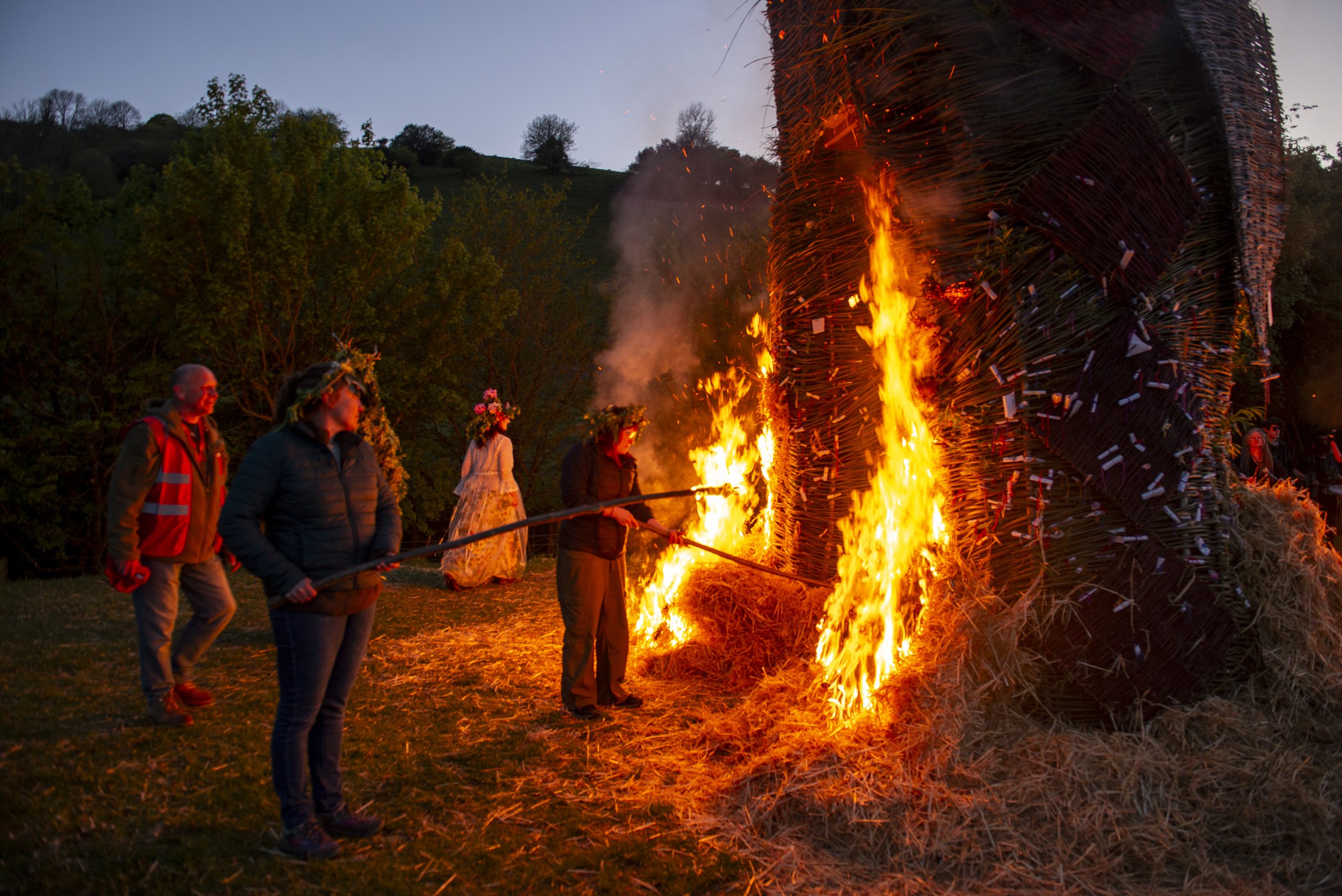Step inside the Stone Age: our newest building is here!
We’ve done it again, folks! We’re beyond delighted to announce that our latest reconstructed prehistoric building is finished — and we may be biased, but gosh it might just be one of our favourites yet. It’s a Stone Age structure that’s pretty unique in UK archaeology, and one of the most incredible finds we’ve ever had the delight of working with. Read on to hear why it’s so special, and see some pics!
This incredible structure is based on a Neolithic building excavated back in 1996 by archaeologist Martin Green on his family farm in Cranborne Chase. The original building is thought to be around 5,000 years old (yes, you read that right!), and it’s really exciting for three reasons.
A fragment of pottery found at Wyke Down, and decorations on our reconstruction inspired by the Grooved Ware style.
First, it has a super distinctive shape that marks it as belonging to the Grooved Ware culture, a Stone Age culture that created stunning pottery — and a huge piece of beautiful grooved ware pottery was actually found in this building, so we know we’re on the right track. Grooved ware pottery is known for its beautiful geometric decorations, and is a brilliant example of early human art.
Secondly, this building looked out over two henges — not of stone, or even wood, but of earth. These earth henges are large and distinct even to this day, and indicate that this site was really important — though whether spiritually, culturally, or politically, we can’t be sure.
The miraculous 5,000-year-old piece of plaster, showing clear wattle imprints, and microscope analysis of the plaster.
Finally, the most exciting bit. Normally for our buildings we’re working with little more than a floorplan of where the posts and stakes were placed, with no evidence for what the walls or roof were made of. When you’re working with buildings that are thousands of years old and made of organic materials, those materials are going to rot. Evidence of walls and roofs is extremely rare, even for our more recent periods like the Anglo-Saxons. Imagine our absolute astonishment and delight, then, when Martin showed us a chunk of plaster from this building — 5,000 years after the building was destroyed.
It’s hard to overstate how cool this is! The plaster shows clear indents where pieces of wood were pressed into it — great evidence for wattle walls — but more than that, it gives us something to analyse. We sent off a piece of the plaster for analysis by archaeologists at Cambridge University, and their findings are a whole new level of exciting. This small chunk of plaster is completely unique in the UK, and possibly even the whole world, and gives us evidence that people in the Stone Age were using advanced building techniques previously not thought to have been invented yet, including creating lime — a process that requires temperatures of over 900 degrees!
The woven roof of this building — a Butser first! — and examples of joinery in the main structure that allowed us to build using only wood.
So, now you know why we’ve been so excited about this building. Over the past two years, our amazing team of archaeologists and volunteers have worked to reconstruct Wyke Down and interpret the evidence. That’s included experimenting with something completely new for Butser: a woven roof.
In the past, we’ve used handmade rope (the kind Stone Age people would’ve crafted from natural materials) to lash beams together—but making rope would have been so labour-intensive, and buildings require so much of it, that we started to wonder if there might be a quicker and easier way.
So this time we asked: what if they just didn’t use any rope at all?
We know Stone Age people were able to use simple joinery — there’s a wooden well near Eythra in Saxony from the Stone Age that displays really impressive woodworking techniques — so for this building we’ve gone with all joinery for the beams. For the roof, we' tried out a woven roof structure, a bit like an upside-down basket, that allowed us to pin thatch directly onto the frame, rather than tying it on with rope.It’s a whole new experiment in understanding prehistoric craftsmanship.
Our own Thérèse Kearns, Butser archaeologist, with Martin Green, excavator of this structure.
The original Wyke Down site has long been a passion project for Martin Green, who’s been exploring the archaeology of Cranborne Chase since he was a boy—literally picking up flint from the fields. Having him at Butser for the official opening was a real honour, and we’re so proud to continue his legacy with this new build.
If this has piqued your interest, the entire build—from the first post hole (with cow bone shovels) to the final thatch—is available to watch on our streaming platform Butser Plus, including interviews with our archaeologists, volunteers, and Martin himself.
As always, we’re so grateful to our community—Friends of Butser, Butser Plus members, visiting schools, and all our lovely guests—for supporting our not-for-profit mission. Every ticket, membership, and donation goes straight back into research and education, helping us keep the past alive for future generations.
See you soon in the Stone Age!















































